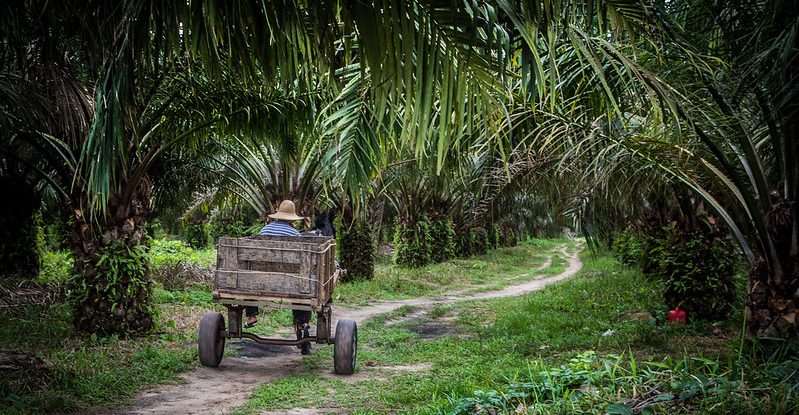Can oil palm be produced in ways that benefit the environment and sustain livelihoods for smallholder farmers? That’s the question being explored in a recent study by researchers at the Centre for International Forestry Research and World Agroforestry (CIFOR-ICRAF) and partner institutions.
The scientists surveyed 198 randomly-sampled smallholders in Tomé Açu, Pará State, Brazil, to find out more about how oil palm agroforestry might serve smallholder livelihoods. They found that most of the surveyed farmers employed a wide range of land use and livelihood strategies, by forming mosaics of agroforestry systems alongside fields of cash crops such as black pepper, cocoa, açaí, passionfruit, cassava, and food crops nestled amongst patches of regrowing and conserved forest.
Meanwhile, few had chosen to plant oil palm, despite its very high potential for providing income and a guaranteed market. While palm oil mills in Brazil offer 25-year contracts including inputs, technical assistance, and finance, most small-scale farmers in the region appear to be wary of investing a large portion of their land and labour to a single crop that they see as depleting soils and competing with other crops.
The researchers found that while both agroforestry and oil palm can lead to economic success (relative to average local living standards), the vast majority of farmers reported being keen on expanding their agroforests, but very few intend to plant oil palm. While smallholder farming is widely recognized – in Brazil and throughout the tropics – as being capable of adapting to different contexts and shifting challenges through its diverse livelihood strategies, the business model and technological package required by the mills in this context often excludes families from the lucrative palm oil market. Smallholder livelihoods and land use strategies are starkly different from the homogenous, industrial oil palm production systems that have dominated the landscape to date.
The researchers explored whether intercropping oil palm with agroforestry systems could render this commodity more attractive to farmers. They concluded that wider adoption of oil palm would likely require tailoring production systems and agreements with mills to reflect farmer goals and diverse livelihood strategies. Although many of the surveyed farmers deemed oil palm agroforestry a promising alternative to conventional industrial plantations, wider adoption of mixed systems necessitates allowing farmers to opt for smaller plantation sizes according to their labour and land constraints, while also addressing preferences for crops and farming systems that meet their objectives and fit within their wider land use strategies.
For more information on this topic, please contact Andrew Miccolis: A.Miccolis@cifor-icraf.org or Daniel Palma Perez Braga: daniel.braga@ufpa.br
Acknowledgements
This study is part of wider research led by World Agroforestry (ICRAF) within the SAF Dende project, an alliance between ICRAF, Natura Innovation and Product Technology Ltda., CAMTA (Mixed Agricultural Cooperative of Tomé Açu, and EMBRAPA (Brazilian Agricultural and Livestock Research Corporation), with funding from USAID.
We want you to share Forests News content, which is licensed under Creative Commons Attribution-NonCommercial-ShareAlike 4.0 International (CC BY-NC-SA 4.0). This means you are free to redistribute our material for non-commercial purposes. All we ask is that you give Forests News appropriate credit and link to the original Forests News content, indicate if changes were made, and distribute your contributions under the same Creative Commons license. You must notify Forests News if you repost, reprint or reuse our materials by contacting forestsnews@cifor-icraf.org.
